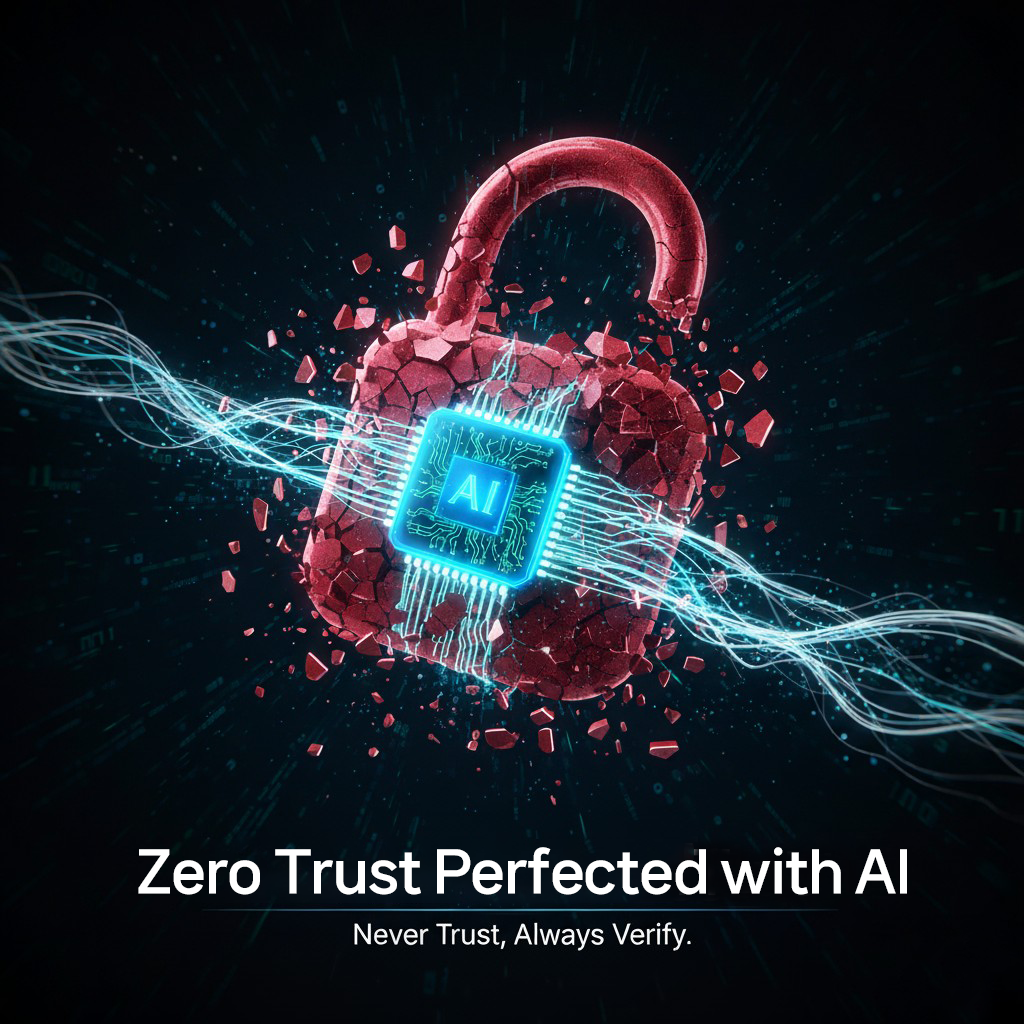AI-Based Zero Trust Access Control Model Application Scenarios
DBSAFER Real-Time Scanner and AI-powered Zero Trust access control automate asset management and policy enforcement, creating a secure and efficient security environment.

Introduction: The Evolution of Zero Trust and New Challenges
Modern IT environments, driven by cloud adoption, remote work expansion, and increasing cyber threats, have exposed the limitations of traditional perimeter-based security models. The Zero Trust security model follows the principle “Never Trust, Always Verify”, continuously validating all access requests and establishing a new paradigm for organizational security.
The main challenge in implementing Zero Trust is identifying assets in dynamic and complex IT environments, assessing risk in real time, and automatically establishing appropriate access policies. Achieving this requires AI-driven asset management and automated policy orchestration. DBSAFER RT Scanner addresses these requirements as a core solution.
Zero Trust Maturity Model: Journey Toward Full Automation
According to the Zero Trust Guidelines 2.0 from the Korea Zero Trust Forum, Zero Trust maturity is divided into four stages:
Existing Stage (Static, Perimeter-based, Manual)
- Manual security policy configuration
- Static perimeter-based security
- Limited visibility
- Manual incident response
Initial Stage (Partial Automation)
- Partial process automation
- Component-level integration
- Partial automation of attribute/lifecycle management
- Centralized visibility
Enhanced Stage (Automated, Centralized, Integrated)
- Expanded automation coverage
- Strengthened central control
- Dynamic policy application
- Asset-specific dynamic least privilege
Optimized Stage (Dynamic, Fully Automated)
- Fully automated attribute and policy assignment
- AI-based continuous protection
- Real-time context-aware control
- Automated threat response
Key requirements at the optimized stage:
- Trigger-based dynamic policy creation and application
- Session- and context-aware dynamic access control
- AI/ML-based continuous risk evaluation
- Integrated management of assets and vulnerabilities across environments
- Micro-segmentation and SOAR integration
DBSAFER Real-Time Scanner: Innovation in AI-Based Asset Management
DBSAFER RT SCANNER enables the full automation required in the Zero Trust optimized stage. Its key functionalities include:
Real-Time Asset Change Tracking
- Asset Creation Detection: Instantly identifies new servers, databases, and storage in cloud/on-premises environments
- Asset Modification Monitoring: Tracks configuration changes, permission updates, and data changes in real time
- Asset Deletion Tracking: Monitors removals and data movements to detect Shadow IT and potential data leakage
AI-Based Asset Scoring and Criticality Assessment
AI engine dynamically evaluates and scores assets based on risk:
- Base risk score by asset type
- Tag analysis for personal, confidential, or sensitive data
- Data scan results for actual sensitive content
- Access pattern analysis to detect anomalies
- Network location and exposure evaluation
- Known vulnerability presence
Final scores guide automated policy creation and enforcement.
Automated Security Policy Generation and Deployment
- Dynamic Access Assignment: Differentiated permissions based on asset criticality
- Real-Time Policy Adjustment: Automatic updates according to changing risk levels
- Micro-Segmentation: Automatic network isolation for high-risk assets
- Enhanced Monitoring: Automated logging and alerting for critical assets
Real-World Scenario: AWS RDS Security Automation
Scenario: Development team creates a new MySQL RDS instance for customer data processing.
Asset Discovery
- Real-time Scanner detects new RDS via AWS API
- Automatically collects instance type, network configuration, and tag information
AI-Based Risk Evaluation
- Tag analysis: "Personal Data", "CustomerDB" → increased risk
- Data scan: identify sensitive columns
- Network analysis: public subnet → further risk increment
- Final score: high-risk classification
Automated Policy Application
- Access restriction: only team lead and DBA allowed
- Time-bound access: within working hours
- MFA enforcement: all access requires multi-factor authentication
- Network security: dedicated security group automatically applied
- Monitoring: query logging and anomaly detection enabled
Continuous Monitoring and Policy Adjustment
- Data growth monitoring
- Normal access pattern learning
- Real-time policy adjustment according to risk changes
Advanced Scenario: Multi-Cloud Asset Flow Tracking
Scenario: Personal data database backup moves from AWS to Azure.
Event Sequence:
- File creation detected in AWS S3
- Content scan confirms personal data
- Copy detected to Azure Blob Storage
- Cross-cloud movement alert triggered
- Automated policy application:
- Uniform security policies across both clouds
- Metadata tagging for data location tracking
- Unified access log management
AI-Based Automated Actions:
- Automatic data classification based on content
- Policy synchronization across cloud environments
- Anomaly detection for large unauthorized data transfers
- Automatic compliance verification for GDPR and local data protection regulations
Technical Implementation Elements
Real-Time Monitoring Architecture
- API-Based Detection: Integrates AWS CloudTrail, Azure Activity Log, GCP Audit Log
- Agent-Based Monitoring: Detects on-premises file system and database changes
- Network Scanning: Periodic scanning to identify Shadow IT assets
AI/ML Engine Components
- Natural Language Processing: Analyze schema, filenames, and tags automatically
- Pattern Recognition: Learn normal vs. abnormal access patterns
- Risk Prediction: Predict future risks using historical data
- Policy Optimization: Automatically balance security and usability
Expected Benefits and Value
Security Advantages
- Zero-Day Response: Immediate policy application for newly created assets
- Shadow IT Mitigation: Automatic discovery and control of unmanaged assets
- Real-Time Threat Response: Immediate automatic actions for anomalies
- Policy Consistency: Uniform security policies across environments
Operational Efficiency
- Resource Savings: Over 90% of manual asset management automated
- Rapid Deployment: Security settings automated for faster service rollout
- Error Reduction: Minimized human errors
- Compliance Assurance: Automated regulatory verification and reporting
Conclusion: Transition to Zero Trust Optimized Stage
AI-based Zero Trust access control models accelerate digital transformation while maintaining security and operational efficiency. DBSAFER Real-Time Scanner enables dynamic, fully automated control in hybrid cloud environments, ensuring consistent security with minimal human intervention.
Through AI and machine learning-driven asset management and policy automation, organizations can build a safe, efficient, and agile digital environment. The focus is no longer “how to automate”, but “how fast can we automate”—a critical competitive factor in modern IT security.
DBSAFER Real-Time Scanner realizes dynamic full automation in Zero Trust. AI-driven intelligent asset management and policy automation allow organizations to achieve safer, more efficient digital operations.
